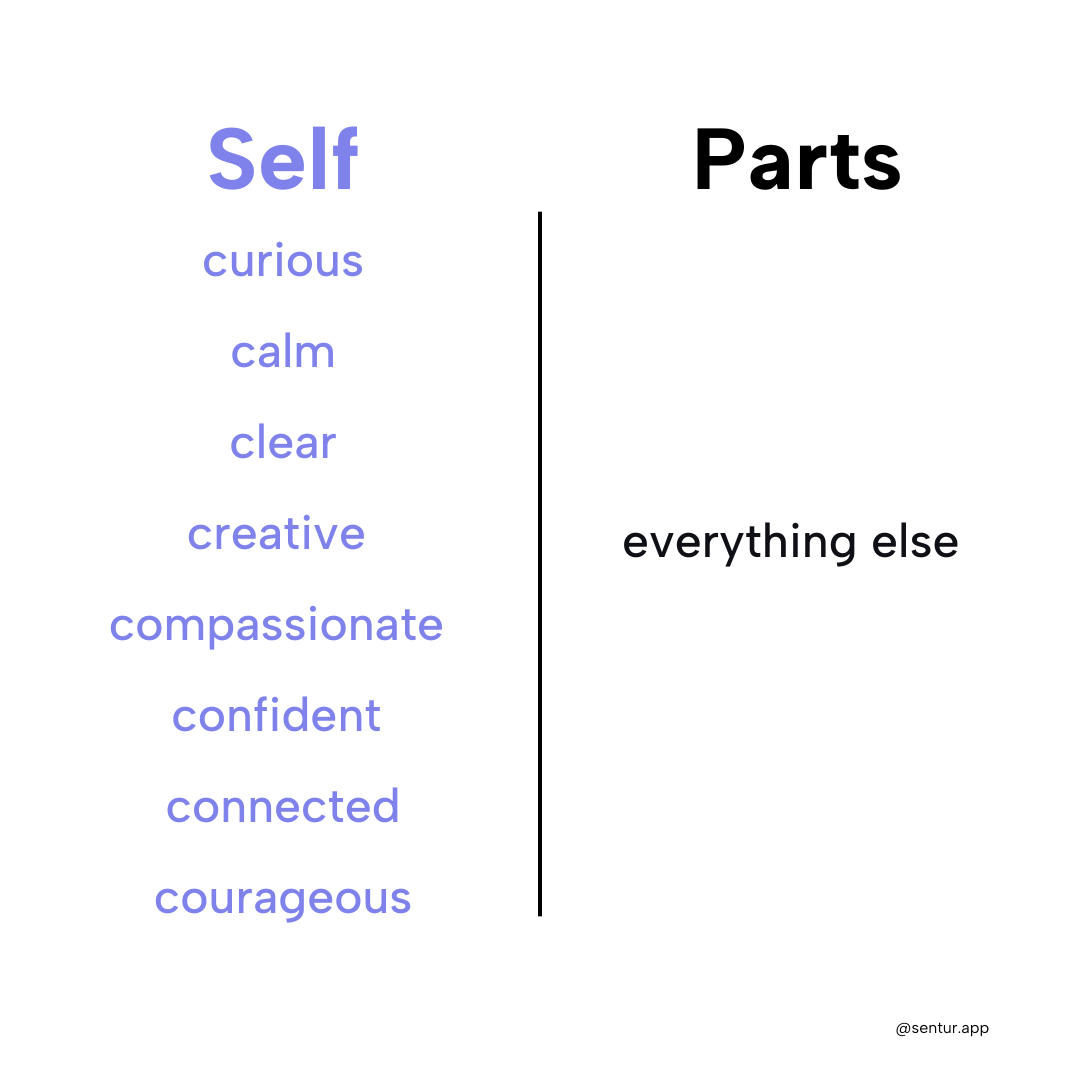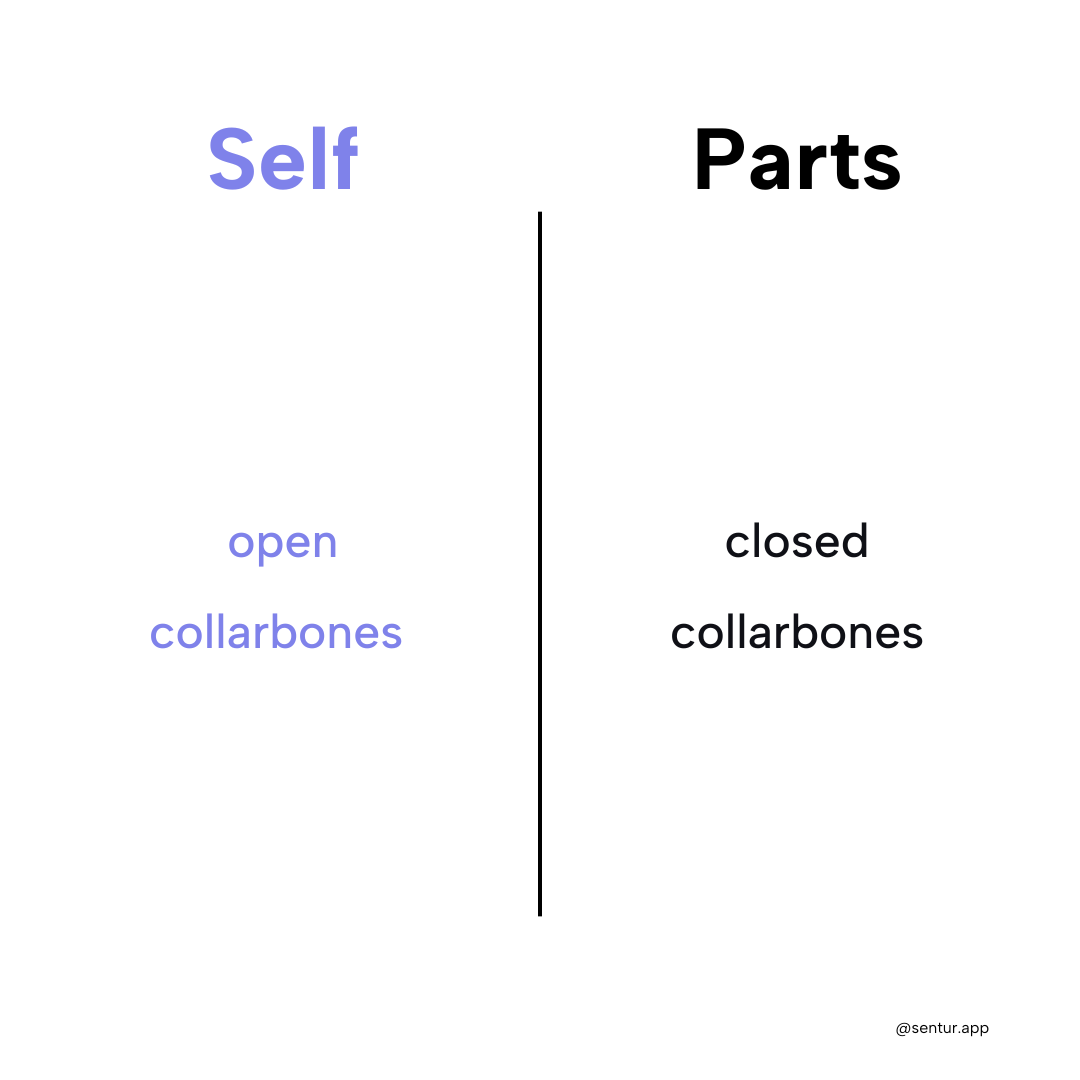Getting Started With Parts
When I first embarked on my journey with Internal Family Systems (IFS), I grappled with a pivotal question that resonates deeply with my clients: How do I distinguish between what is a part and what is Self? This query lies at the heart of self-transformation and personal growth, yet the path to discerning this is not always clear-cut.
The Challenge of Distinguishing Parts from Self
In the realm of IFS, understanding what constitutes a part versus the Self is fundamental. However, this distinction can be nebulous, particularly for beginners. The literature, while insightful, often lacks accessible instructions for this differentiation. For instance, some resources state that parts are subpersonalities in our systems, each with their own emotions, body sensations, and thoughts are parts, but fails to differentiate the difference in qualities of parts vs Self. This is very important because Self has its own body sensations, emotions, and thoughts so using that to differentiate between part and Self is useless. It is the quality of those emotions, body sensations and thoughts that differentiates between the two.
The Subtlety of Identifying Parts
Ok, so if parts are subpersonalities within our psyche. They're like unique characters in the story of who we are, each with their perspectives, feelings, and histories. Understanding this is crucial, but the real task lies in building awareness of part vs Self in the beginning. Some experiences are easy to see as parts. For example, seeing anger as a part and not who you are is easier than let’s say a part of you that worries. And there is also an infinite number of possibilities for unique makeups of parts in the system. Kinda like there are an infinite number of unique people in this world.
Being able to tell if something is a part can simple. Here are my two favorite simple hacks for identifying if it is a part or not:
If the energy I’m feeling is not one of the 8 c’s of Self, then it is a part.
If the energy closes my collarbones, it is a part. If the energy opens my collarbones, it is probably Self.
Getting To Know a Part : 3 Beginning Stages
Stage 1: Identify It As A Part
This is the piece we have been talking about above here. If you are feeling something and you are not sure if it is a part or Self, just ask your self “Is this one of the 8 c’s of Self-energy?” If the answer is no, you can safely assume this is a part.
Stage 2: Ask for Space
After you have identified that this is a part of you and not Self-energy, you will want to ask this part to open up some space by separating their energy from you. This is not like a light switch but more like melting an ice cube with your hand. It is done slowly over time by building trust with this part that opening up some space will be in its best interest.
This is an aspect of the work that can be tricky and can take a lot of time, so please be patient with yourself. This might be an area where you need some professional support.
Stage 3: Ask, “What else?”
This stage is crucial for developing the relationship between your core Self and the part. When your inner system has opened up enough space to encourage the open-hearted observer to be present for this part, then you can ask this part, “What do you want me to know?”—letting this part know that it can share this with you through body sensations, emotions, images, metaphors, stories, etc. After the initial share that this part does, thank it for trusting you in this way and then ask the million-dollar question “What else?”.
This question will signal that you are interested in what has to be shared with you and that your aim is really “getting it” from their perspective, just like we do in human interactions. It signals connection, curiosity, and openness and is the building block for the relationship.
Beyond Stage 3
There is MUCH more to developing a lasting relationship with a part, and the beginning stages above will help you simplify the process from the starting gates.
Do’s and Don’t for Getting to Know A Part
Don’t try and figure out your whole system. It is alluring to try and come at the multiplicity mindset with a figure-it-out model where you are trying to crack the code of your system, and if you could just “figure out” all the parts and their roles, you would be that much closer to healing. Don’t do it. You will end up using this shortcut which will end up being a long way around.
Do have a place where you can come back to building this relationship simply and easily over time. Just as in human relationships, they are not built in a day, or a conversation. They are built over time and with consistent connection. And this process is notoriously strenuous in the day-to-day demands of life. Sentur is a platform built to support the ongoing relationship with your parts and makes is easy and enjoyable to do so. Or if you would like to get a specific “parts journal” to keep track of what your parts are sharing with you that is great too.
Sentur's Contribution to My Journey
Sentur has been instrumental in my journey of developing relationships with my parts. The platform’s self-reflection tool has helped me distinguish between my thoughts, feelings, and body sensations that are parts versus those that are emanations of my true Self. Particularly, the self-reflection feature that aids in connecting body sensations with emotional states has been enlightening, helping me recognize when a dominant part, such as worry, is active.
Also, as a busy human, mother, wife, and daughter on this planet, I will take all the help I can get in simplifying a process for me. I can build relationships with my parts anytime, anywhere, which is invaluable in building trust in my system. I can do it in the pickup line at school, on a walk, or if I get my morning quiet time. I can work on the relationship 15 times a day, or if life “just be life-ing” I can pick up where I left off after weeks or months if things have gotten just a bit hectic. It’s all right there for me and I can see the changes I have made along the way!
In Summary
If you choose to use the lens of multiplicity to understand and heal yourself, and I highly suggest you do, simplify it as much as possible, especially in the beginning. Here are your key takeaways:
If you are not feeling one of the 8 c’s of Self-energy, then it is a part.
If your collarbones are not open, it is a part.
Resist the temptation to “figure out” your parts and instead work on getting to know them and building a relationship.
Understanding and engaging with our parts is a journey of self-discovery that leads to profound personal growth and healing. As we continue to explore and understand the landscape of our internal parts, we unlock the doors to a more authentic, compassionate, and fulfilling life which you deeply deserve.
We’re here to help.
Always in your corner,
Sarah



